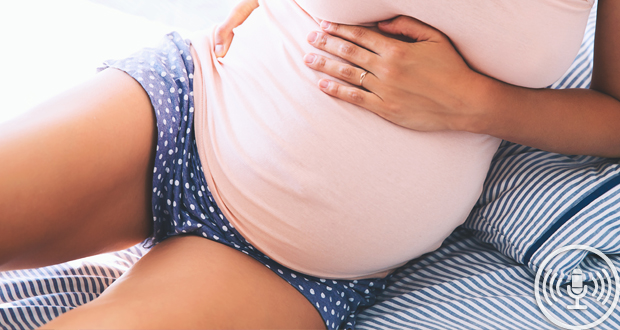A Sydney-based researcher and lecturer at Notre Dame’s School of Medicine has been awarded a grant to examine the effectiveness of antenatal education in reducing the rate of caesareans.
Australia has one of the highest rates of caesareans in the western world, after the US.
Kate Levett was awarded a grant of $320,000, and will lead a team from Notre Dame and Western Sydney University's School of Medicine, School of Nursing and Midwifery and NICM Health Research Institute.
The new project, part of an $18 million commitment by the then Turnbull government, builds on Levett’s PhD research that found an effective childbirth education program could reduce caesareans in Australia by 120,000 each year, saving the healthcare system up to $97 million annually.
“The current rate of caesarean births in Australia is around 34 per cent, more than twice the optimal rate recommended by the World Health Organization,” Levett said. “WHO recommends a caesarean rate of between 10 and 15 per cent as having the greatest health benefits for women and babies."
She said that such interventions have a potentially negative impact on the health and wellbeing of women and their babies, and may be avoided through education and alternative pain management options.
“Our previous study showed that the Complementary Therapies for Labour and Birth Program significantly reduced epidural use, caesarean sections, as well as reducing a range of other clinical interventions that have important adverse consequences if overused in healthy women and babies."
She said the research is already proving successful as it's starting to influence clinical practice, and more women are seeking independent education for birth preparation.
“Since the initial trial that I did for my PhD, I have had many requests from midwives, nurses and women to run education courses about the evidence-based components from the Birth Course.
“I am seeing in my practice that midwives and nurses are really wanting to be trained in the acupressure techniques and tui na massage techniques,” she said.
Levett has trained educators and midwives/nurses who are working in birth units in how to apply the techniques during labour. In turn, the educators are passing this onto the birth partners.
“When we did the qualitative interviews with women and birth partners, the partners said that it was the acupressure that was their ‘go to’ tool. They felt that they had something they could do, such as if the woman had back pain, the baby was in posterior position, or if they felt nauseated."
She said ultimately, medical interventions and pharmacological pain relief became a back-up, rather than the only option available to women.
Levett said another outcome was that women and their partners felt that they formed a ‘team’ with the midwives during birth when they were all on the same page.
“The midwives said that the women and partners were easier to work with if they had education and understanding of what was happening in their bodies.
“It gives women options and increased ability to make choices about evidence-based techniques to support their own birth, while maintaining medical support within hospitals where needed. It is in the space of unnecessary interventions that we are trying to educate and empower women and nurses/midwives,” she said.
We spoke with Dr Kate Levett to find out more.
Do you have an idea for a story?Email [email protected]
 Aged Care Insite Australia's number one aged care news source
Aged Care Insite Australia's number one aged care news source

